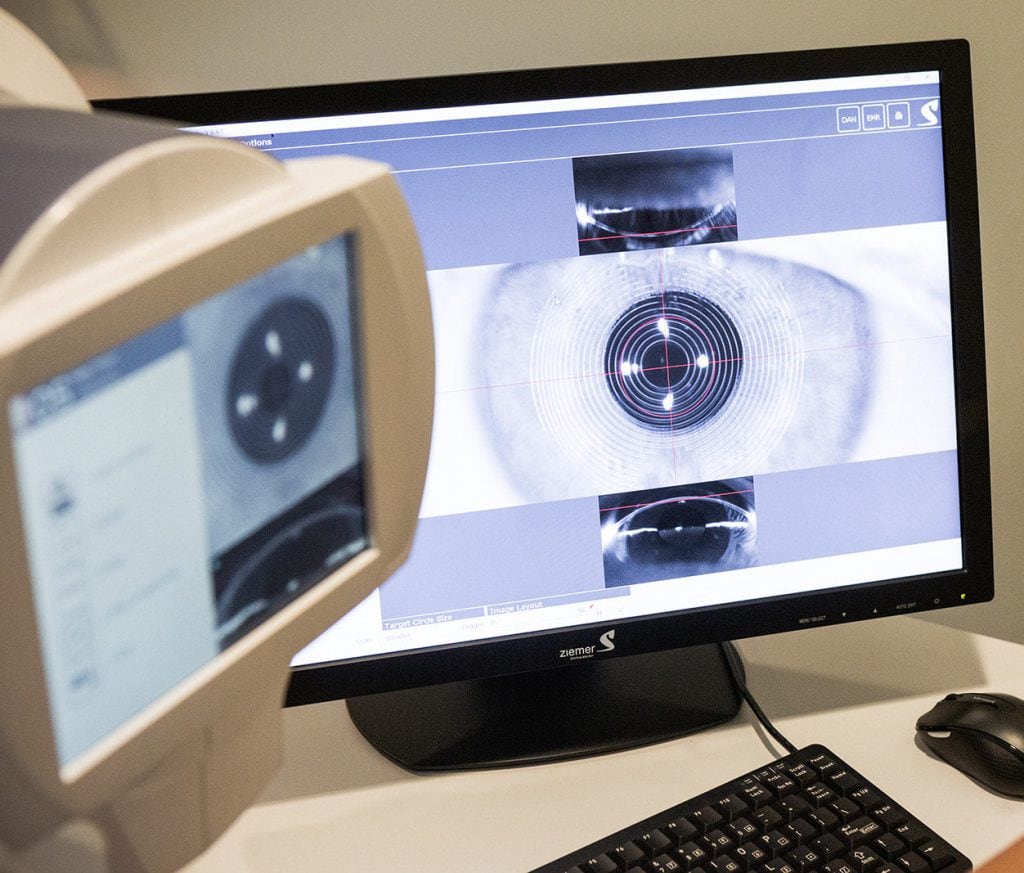ICL
State of the Art: Intraocular Lenses (IOLs)


January 7, 2021
State of the Art: Intraocular Lenses (IOLs)
Perhaps no year has seen as much improvement in the intraocular lens as 2020. Intraocular lenses have been improved continuously since the first one was implanted in the eye after cataract surgery by Dr. Harold Ridley in 1949. By the 1980’s, the majority of people still did not have IOLs implanted, and had to wear thick magnifying glasses after cataract surgery. In the 1990s, foldable IOLs were developed so the lenses could go through smaller and smaller incisions. Ultrasound and optical measurements of the eye preoperatively, allowed more accurate lens power estimates to make the post-operative spectacles thin, but still necessary. The goal of cataract surgery in the 1990s through early 2000s was to improve distance vision, but readers were still needed for near objects.
In the past decade or so, multifocal lenses (MFIOLs) have been developed to allow people to see distant and near objects clearly so they are less reliant on reading glasses. The first MFIOLs had a limited range of what was clear. Objects at 14” might be clear but 8” and 20” were blurry. In July 2016, the J&J Symfony Extended Depth of Field (EDOF) lens was approved, which increased the range of what was clear. The results are very good, but nighttime glare and rings around lights were noticeable to almost everyone, but seemed to be tolerated by the vast majority. Patients do achieve good near vision, but sometimes wore reading glasses in poor lighting conditions and for very small or near print.
In late 2019, Alcon regained the market lead after the Panoptix lens was approved as a “trifocal” IOL. Reviews for the Panoptix generally stated that the near vision was better, but distant objects might be slightly worse than with a monofocal IOL, which is the gold standard for visual quality.
Just a few months later in February of 2020, Alcon received FDA approval for the Vivity IOL which has an optical quality profile very similar to existing monofocal IOLs, which makes night driving, and general quality of vision very similar to the best available lenses. The near vision with the Vivity IOL also seems to be excellent according to early feedback. The lenses are beginning to be implanted throughout the US in late 2020.
While I’m very optimistic that the Vivity IOL will advance the technology, sometimes we find unanticipated issues, or just that it’s not quite as good as advertised. The materials, basic shape and design have been time tested in millions of implants. However, I would guess the Vivity IOL will quickly become the leading IOL in the US in 2021.
Another consideration is that the multifocal lenses, marketed as “premium lenses” or “lifestyle lenses” are not covered by insurance, and generally add $2500 to $3500 per eye out of pocket. However, since these will remain in your eyes for the rest of your life, it is money very well spent in my opinion. Being able to put down glasses forever is an amazing lifestyle improvement, and one that our parents and grandparents generation couldn’t have imagined when they had to wear thick, heavy, uncomfortable glasses that distorted vision and that limited our visual field. You’ve come a long way baby!

*This blog post does not cover the risks of cataract surgery, which must be discussed at length with your surgeon. While cataract surgery is the most commonly performed surgery in the US, with about 4 million per year, there are potential complications.

Dr. Matthew R. Sharpe
Dr. Matthew Sharpe is an Ophthalmologist specializing in refractive surgery and the owner and founder of SHARPEVISION MODERN LASIK & LENS, with offices in Seattle WA, Austin TX, and Chicago IL. Dr. Sharpe is a motorcyclist and fluent French speaker. He enjoys traveling, but finds he is happiest at home working on his yard and cheering on The Ohio State Buckeyes with his wife, three children, and four dogs.
